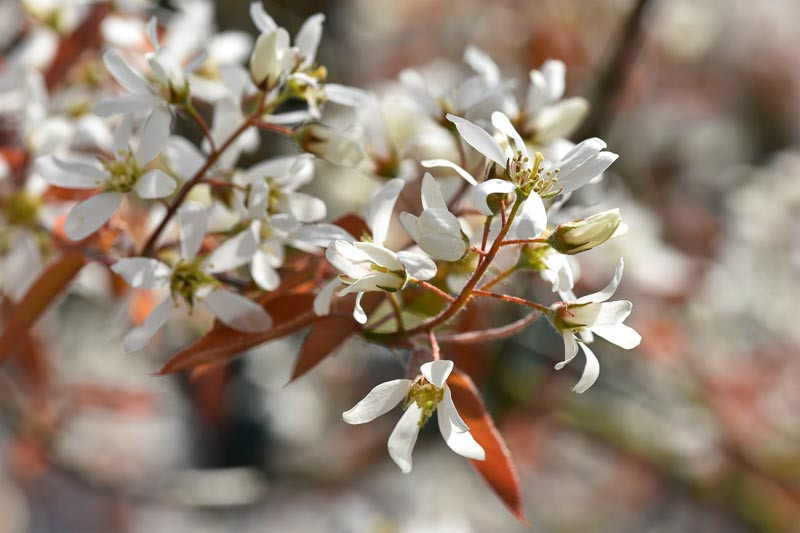Amelanchier (Serviceberry)
Amelanchier, commonly known as Serviceberry, Shadblow, or Juneberry, is a versatile genus of about 20 species of deciduous trees and shrubs. Its graceful habit, robust hardiness, delicate flowers, and myriad uses and benefits make it a valuable addition to many landscapes.
Habit: The habit of Amelanchier varies by species, ranging from small, multi-stemmed shrubs to tall, single-trunked trees. They are often characterized by an open, airy crown, and their striking architectural structure shines in winter when leaves have fallen.
Hardiness: Amelanchier species are remarkably hardy, with most thriving in USDA zones 4-9. They are resilient plants, tolerating a wide range of soil types, including sandy, loamy, and clay, provided the soil is well-draining. They are also remarkably disease-resistant and tolerate urban pollution.
Flowers: One of the standout features of Amelanchier is its profusion of delicate white flowers, which bloom in early spring before leaves fully emerge. The blossoms are usually arranged in showy, slightly fragrant clusters, attracting a host of pollinators.
Uses and Benefits: Amelanchier has numerous uses in both ecological and landscape contexts. They are excellent for naturalistic planting schemes, woodland gardens, or as specimen plants. Their stunning spring blossoms, edible summer berries, brilliant fall foliage color, and ornamental winter bark add multi-season interest.
The berries are edible, with a sweet, apple-like flavor, and can be eaten fresh or used in pies, jams, and jellies. They’re also favored by birds, contributing to the plant’s wildlife value.
Furthermore, being native to North America, Amelanchier species are excellent for biodiversity, supporting various native insects and birds.
In short, with its blend of beauty, hardiness, and ecological benefits, Amelanchier is a true garden champion, offering something of interest in every season.

